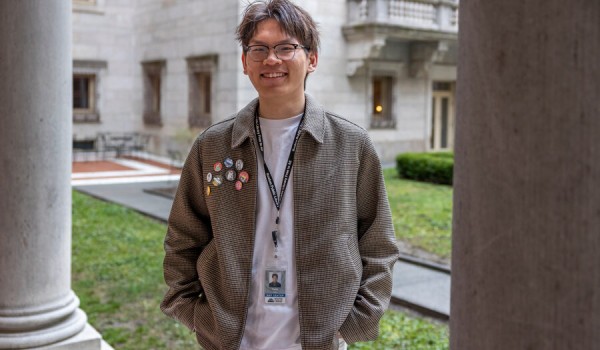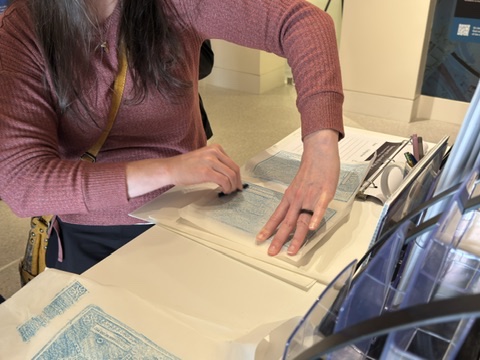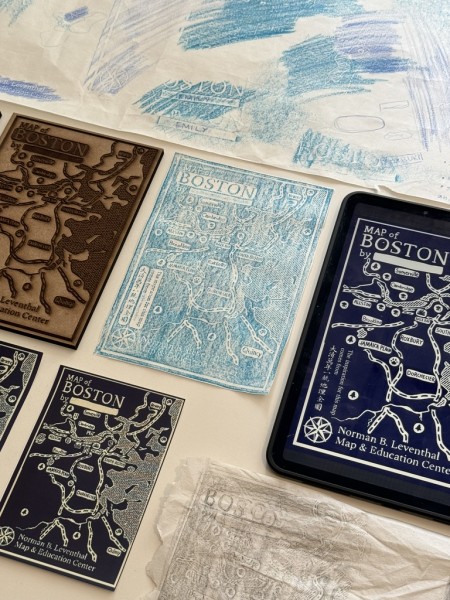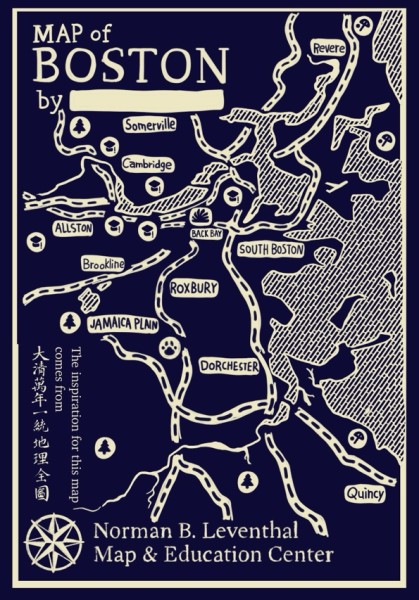- All Plans
- Yahoo Press Release
- Bloomberg Press Release + Yahoo Finance
- Business Insider Press Release
- Benzinga Press Release
- Digital Journal Press Release
- US Times Now Press Release
- AP News Press Release
- Yahoo Finance Press Release
- Street Insider Press Release
- MSN News Press Release
- USA Today Press Release
Bridging Past and Present: Yuzhe Feng’s Innovative Approach to Interactive Exhibition Design

Yuzhe (Satoh) Feng, a Northeastern University student, innovatively blended history with contemporary interactive design in the “Heaven and Earth” exhibition at the Boston Public Library’s LMEC. Feng made historical Chinese cartographic artistry accessible to modern audiences by creating an immersive, educational station where visitors could recreate historical maps of Boston using traditional rubbing techniques.
Boston, MA – The Norman B. Leventhal Map and Education Center (LMEC) at the Boston Public Library recently showcased a distinctive exhibition titled “Heaven and Earth,” highlighting two exceptional nineteenth-century Chinese maps. Completed in an iconic Prussian blue pigment, these artifacts captivated visitors with their historical significance and striking aesthetic beauty. Central to the success of this exhibition was the innovative and culturally thoughtful work of Yuzhe (Satoh) Feng, a Northeastern University student whose unique approach seamlessly blended history with contemporary interactive design practices.

Yuzhe (Satoh) Feng working at the Boston Public Library.
In the “Heaven and Earth” exhibition, visitors were introduced to traditional Chinese cartographic artistry, featuring maps created using a historic rubbing technique. These artifacts, vividly rendered in Prussian blue, represented not just geographical understanding but also cultural artistry. Feng’s primary challenge and contribution were making this historical technique accessible and meaningful to contemporary museum audiences. Combining his design skills with his cultural heritage, he developed an interactive installation that encouraged visitors to engage directly with the exhibition content.

The star chart in the Adler Planetarium collection. This image features a digital edit to include the leftmost panel, which is not in this position in the original object.
“Given my proficiency in laser cutting and 3D printing, coupled with my illustration skills, I wanted to create something immersive and educational,” Feng explained. He introduced a creative station where visitors could experience traditional map-making techniques firsthand by recreating historical maps of Boston. This innovative feature allowed visitors to use rubbing methods similar to those historically used in China, connecting them tangibly and personally to the exhibition’s central themes. Feng thoughtfully chose Boston maps specifically to resonate with both local visitors and those from further afield, providing everyone with uniquely meaningful keepsakes.

Visitors explores re-creating Boston map using traditional techniques.

Laser-cut woodblocks and rubbings let visitors recreate Boston maps with traditional techniques.
Feng’s cultural background from China greatly influenced his design approach. “As someone from China, sharing my cultural heritage in such a meaningful way through these maps has been incredibly rewarding,” Feng noted. His thoughtful integration of traditional Chinese artistic elements into modern interactive design established an authentic dialogue between cultures, making the historical content relatable to diverse audiences. His approach was driven by the traditional Chinese belief that visual art is enhanced by accompanying literature and storytelling, a philosophy he embraced in creating immersive visitor experiences.

An example of visitor-created Boston maps.
Throughout his co-op, Feng not only honed his artistic and technical skills but also expanded his understanding of how narrative and history enrich design. Reflecting on the experience, he shared that he had previously underestimated the value of historical context and storytelling in his creative work. Now, he firmly believes that historical and literary depth is essential to compelling design. This insight has reshaped his approach to future projects, prompting deeper exploration and incorporation of historical narratives into his practice.
Ultimately, Feng’s work at the LMEC exhibition demonstrates the powerful potential of integrating cultural heritage with contemporary interactive design. Through his creative contributions, visitors were offered an unforgettable, interactive journey into history, gaining insights into traditional Chinese cartographic methods. Feng looks forward to continuing this innovative exploration, bridging past and present through design, technology, and storytelling.
Media Contact
Organization: Yuzhe (Satoh) Feng
Contact Person: Yuzhe (Satoh) Feng
Website: https://www.linkedin.com/in/yuzhe-feng-974ba4290/
Email: yuzhefeng56@gmail.com
Country: United States
Release Id: 25032525461
